Let us look in to the details of Queensland heeler dog.
Queensland heeler dog is a short-coated medium-sized dog originally bred in Australia for herding cattle over long distances. They are also known as Australian Cattle dog, Blue Heeler, or Red Heeler.
Queensland heeler got its name heeler from its habit of nipping the heels of the cattle for driving them. They are highly intelligent and energetic dogs having an independent mind of their own.
They need a lot of physical exercise and need an active owner. They are not for the ones who love to relax on the couch and are not recommended as Apartment friendly dogs.
Australian Cattle dog is quite a loyal dog who attaches to one person the most with whom he stays like a shadow. This is why they are also called “Velcro Dogs”. They are reserved to strangers and hence are also used as guard dogs.
Queensland heeler has strong nipping instincts and it is not uncommon to see it nipping at small children. Early socialization and training are required for them to overcome the same.
Queensland heeler at a glance
| Size | 18 to 20 inches |
| Weight | 30 to 50 pounds |
| Temperament | Active, Intelligent and Loyal |
| Lifespan | 12 to 15 years |
| Price | $600 to $1000 |
| Purpose | Watch dogs |
| Popularity | Low |
| Grooming | Low |
| Hypoallergenic | No |
Check out an Australian Heeler puppy playing
History of Queensland heeler dog
Queensland Heeler has been credited to the growth of the Australian Beef industry. When the Early Britishers settled in Australia and started raising livestock, they had the challenge of moving a large group of cattle across hundreds of miles to the Sydney markets.
Many times, they used to lose cattle in the un-fenced areas.
The dog that they brought with them was Old English Sheepdog known as Smithfields. But they were found not suitable for herding large cattle. Hence, the need for a dog rose that can herd the cattle over large distances.
In this chase of an ideal cattle herding dog, old English sheepdog was cross-bred in the early 1800s with multiple dogs like Australian Dingoes, collies, and Dalmatians. This is how Queensland heeler aka Australian Cattle dog was developed.
The blue and red color Queensland Heelers were quite popular and hence they started to be known as Red Heelers, Blue Heelers, or Queensland Blue Heelers.
Queensland heeler was approved by American Kennel Club in the year 1980.
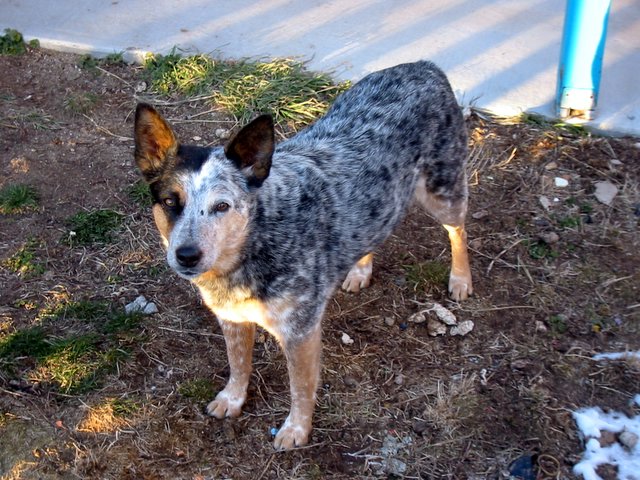
Queensland heeler Appearance
Queensland heeler is a strong, compact, and muscular dog with a deep muzzle. They are a bit longer than tall that helps them to nip while herding the cattle. They have a broad skull, medium length deep powerful muzzle, and muscular cheeks.
Queensland heeler has oval-shaped keen brown eyes. They have a standing, pointy pricked ears, and curvy tail.
Queensland heeler has a double coat. They are born in white color which later changes to blue-gray or red color. Thus you will mostly see blue or red Queensland heeler.
You may also find Australian cattle dogs in chocolate and cream color but they are not approved by most of the Kennel clubs.
Queensland blue heeler can grow to a height of 18 to 20 inches and weigh approximately 30 to 50 pounds. The average life span is around 12 to 15 years.
Queensland Heeler dog personality
Queensland heeler is quite an energetic and tough dog who doesn’t tire easily. This is because they were originally bred to herd the cattle over large distances all day. They need an active owner who can keep them busy both physically and mentally.
If blue or red heeler is not kept busy, he can find his tricks that you may not like. He may become destructive with activities like nipping and chewing at things, digging, etc.
Like other shepherd dogs, Queensland heeler is quite intelligent and independent. He can be trained but is obstinate also at times. Firm consistent training is required for them.
Queensland heeler is a loyal dog and would typically attach to one person of the family and would stay around him all the time. He would be protective of his territory and is reserved to the strangers thus making him a good guard dog.
His nipping instincts remain dominant so you may see him nipping at heels especially at young children whom he may try to drive. Early socialization and training are required to subvert this.
Queensland heeler has a high prey drive and he may chase small animals like cats etc. Early socialization helps so they treat them as part of the pack.
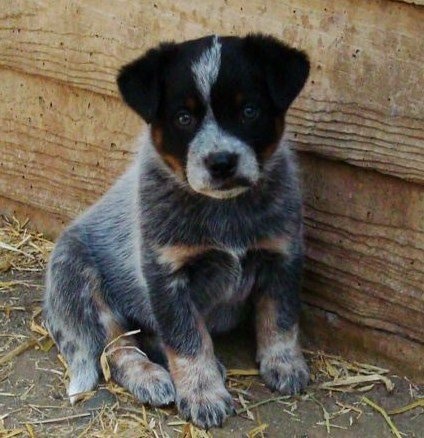
Red or Blue Queensland heeler as a family dog
Red or Blue Queensland heeler is suitable for active families having a large fenced yard. These dogs are quite agile and need lots of physical work and mental stimulation. They are not suitable for lazy ones and apartment living.
Queensland heeler has strong instincts of nipping to drive (as they used to drive the cattle). This may mean they nip the younger children as well for driving.
Thus they are not recommended for families with younger children. If required, they should be socialized and trained early.
Queensland heeler have strong prey drive and may chase small pets like cats. They should be socialized with small pets since birth so they think of them as part of the pack.
Blue heeler are very loyal, protective dogs who will make a special bond with one person and would be stay close like a shadow to him. They are also wary of strangers and are good as Guard dogs as well.
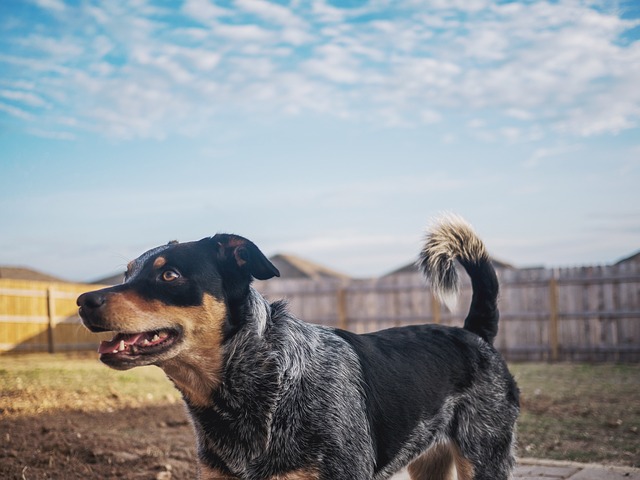
Care
Nutrition
It is recommended to give full-grown Queensland heeler 1.5 to 2.5 cups of high-quality dry food divided into two meals in a day. Though, you may want to change the diet based on size, age, and activity level of the dog.
If your dog is lazy, he doesn’t need much food, while, if he is quite active, he needs more.
Grooming
Queensland heeler has a double coat that is weather resistant. They have a short outer coat and a dense inner coat. They shed moderately around the year but shed heavily once or twice a year when their inner coat blows out.
Australian Cattle dog doesn’t require much grooming. Once a week brushing is good for the coat to be clean and magnificent.
This would also help build the bonding between the owner and him. The frequency of brushing should increase when he shedding heavily while his inner coat blows out.
Queensland heeler needs only an occasional bath when you feel he is dirty or smelly. Frequent bathing may lead to dry skin and other skin related ailments.
Exercise
He is an extremely agile dog who needs a lot of exercise and playtime. Preferable to have a fenced yard where they can play and run. You should give Queensland heeler lots of mental and physical stimulation.
Because, if you do not give him enough, he will find his tricks which may be destructive to you.
Training
They are highly intelligent dogs who can be obstinate at times. Thus they are easy to train but need firm and persistent training. His instincts to nip and mouth must be handled carefully.
If not trained well, they may nip young children often thinking them like cattle to drive. They should also be socialized early so that they can become a well adjusted dog.
Health
They are generally healthy and live a long life but are prone to certain health issues.
- Progressive Retinal Atrophy (PRA). This disease leads to the gradual deterioration of the retina. This may cause the dog to become night blind first and then slowly leads to complete blindness.
- Hip Dysplasia. This is a genetic disease in which hip and thigh bone doesn’t fit properly.
- Deafness. This is a genetic disease prone to Queensland Heelers. This can be tested at the puppy age by doing the Brainstem auditory evoked response (BAER) testing.
- Cystinuria. Queensland blue heelers can also suffer from this fatal neurodegenerative disease. Genetic testing may help diagnose the same.
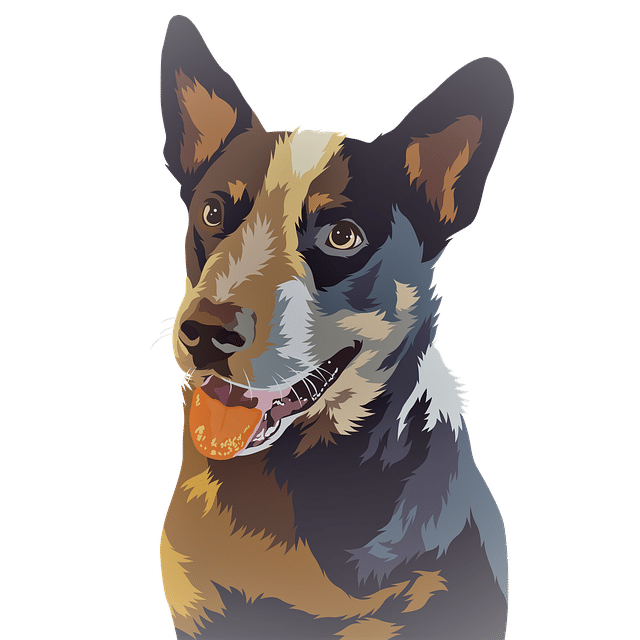
How to find Queensland heeler Puppies?
So you do not want a lazy pooch and have made up your mind for a Queensland heeler, let us look at how you can find a puppy for you.
As they are purebred dogs, it would not be hard for you to find a breeder. Though we would recommend looking for a breeder of repute so that you do not fall for a run of the mill one. Here are a few factors that you should check while looking for a good breeder.
- Your breeder should be able to provide the puppy’s genetic records.
- He should be able to give you the details of the puppy’s parents.
- Observe the area where puppies are kept. It should be clean.
- Check the health of other dogs. They should look active and healthy.
You can also look for Queensland heeler at your local animal shelter. Some dogs may be waiting for being given a new life.
Pros and Cons of Queensland heeler
| Pros | Cons |
|---|---|
| Highly intelligent dogs | Have tendency to nip/bite |
| Highly agile, loyal and protective | Prone to certain health issues |
FAQ
Do Queensland Heelers shed a lot?
Do Australian shepherds bark a lot?
Are heelers aggressive?
Are heelers related to Dingoes?
Final Thoughts
So if you are an active family and don’t have younger than 6 years children at home, you could bring this active, loyal and intelligent dog. He would be highly local to one person whom he attaches to.
Hope we gave you all the insights about Queensland heeler that you were looking for. If you have any of their story to share, please put the same in the comments below.

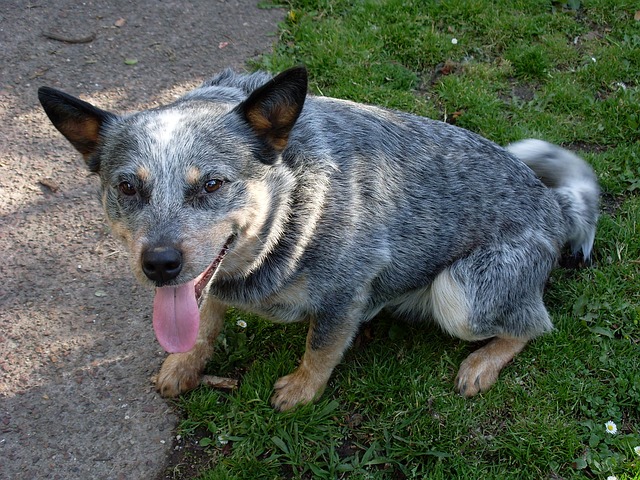
Stranger-friendly dogs will greet guests with wagging tails and nuzzles; others are shy, indifferent, or even aggressive. However, no matter what the breed, a dog who was socialized and exposed to lots of different types, ages, sizes, and shapes of people as a puppy will respond better to strangers as an adult. Remember that even friendly dogs should stay on a good, strong leash like this one in public!